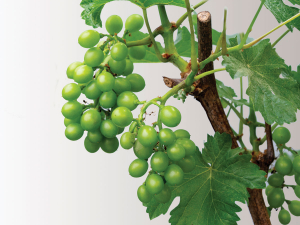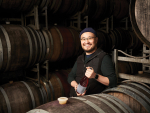One aspect of the Pinot Noir Programme is taking a reductionist approach to conduct research on individual berries and is set to make scientific history.
It involves growing Pinot berries in petri dishes under sterile lab conditions for months at a time, to determine exactly what inputs they require to deliver quality characteristics needed for Pinot Noir production.
Dr Richard Espley, a Science Team Leader at Plant and Food Research is overseeing the berry culture programme. He says to understand what makes a berry gain quality characteristics, it is important to know how inputs and environmental influences contribute.
“You can do that in the vineyard, but it is complicated. You’ve got a bunch of berries that all ripen at slightly different times. In the vineyard, the berries have to cope with different environmental conditions, disease load, heat, light, and all of those things can have a major effect that you can’t really control.”
Hence the research on individual berries, which removes all of those differing parameters.
It may seem like a simple scientific experiment, but it is anything but. Only one other university in the world is doing a similar experiment – Bordeaux University. But in their case they are working on Cabernet Sauvignon – a more resilient grape.
“I love Pinot Noir,” Espley says, “but it is a fickle berry. It is small, it’s delicate and it’s unpredictable. When we told (Bordeaux University researchers) we were going to do it on Pinot Noir, they just shrugged their shoulders and said good luck.”
Despite their skepticism, the research has proved successful here in New Zealand. Espley says they have grown Pinot vines, allowing them to flower, and then removed the small berries, retaining part of the stalk. The berries were sterilized and placed on culture media in a dish, with the stalk implanted in the media allowing the berry to continue to absorb nutrients.
“Berries will continue to grow and develop, which is great, so we have these little baby Pinot Noir berries growing in a very sterile condition. Which means we control of all the other complicating factors that we can’t deal with when we are looking at experimental conditions in the field?.”
The media can be made with a variety of nutrients that the berry can absorb.
“For example, the simplest thing to do would be to change the amount of sugar in the media. The amount of sugar a berry has will affect some of its ripening characteristics. For example, it will create more colour (anthocyanin), a quality characteristic, among others, we are looking for in a good Pinot.”
That has been the starting point this year he says, and the system has proved it is workable.
“We kept the berries alive for a bit more than three months. They do start to go through veraison, they start to change colour. I wouldn’t say they look quite as robust as the best Pinot Noir in the vineyard, as they are a bit smaller and don’t colour as intensely. So what we are going to try and do next season is understand exactly what is going on with this life they are going through during in vitro culture. We are the only institute that has been able to keep Pinot Noir berries alive for this length of time.”
Espley says one of the next steps is to deliver certain stimulants like plant hormones at a particular time and see how that affects the berry and its development, and eventually its characteristics.
“What we do with these little berries is keep them as individual biological samples and then we will analyse those for the key parameters the winemakers want to see in the berries.”
The ground breaking research which is being undertaken at Plant & Food Research in Lincoln has got all the researchers involved in the Pinot Noir programme excited, as it offers the potential to understand what makes quality Pinot Noir that more attainable.














